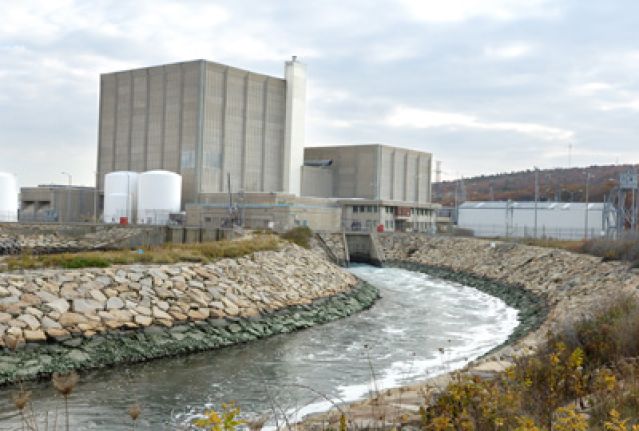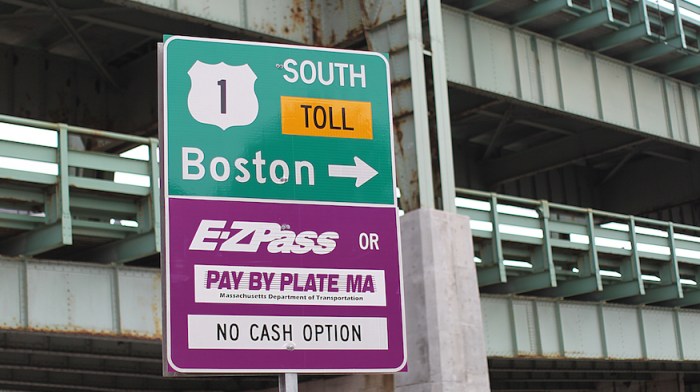Federal regulators on Monday ruled in a decision blasted by the state’s two U.S. senators that the owners of Pilgrim Nuclear Power Station will not have to re-evaluate the risks of earthquakes and floods to the Plymouth nuclear plant or upgrade the vent system intended to prevent explosions in accident scenarios.
The Nuclear Regulatory Commission on Monday granted an extension for Entergy, the company that owns and operates Pilgrim, to comply with regulations for the plant’s “reliable hardened containment vents capable of operation under severe accident conditions.”
The NRC also waived Entergy’s obligation to further study the risks of floods or earthquakes because its said that by the time the study could be finished and implemented the nuclear plant will be closed.
Pilgrim is scheduled to shut down for good by May 31, 2019, but, citing the plant’s safety record and low rating by the NRC, critics of the plant have been repeatedly calling for it to close immediately.
U.S. Sen. Edward Markey blasted the NRC’s decisions Monday, arguing that allowing Pilgrim to avoid heightened safety measures “represents an abdication of (the NRC’s) role as a safety regulator.”
The “decision by the NRC undermines the safety of Massachusetts communities living in the shadow of Pilgrim,” Markey said in a statement. “When Entergy announced its intention to cease operations at Pilgrim, the NRC promised that it would hold Entergy responsible for running the plant as safely as possible until that time. By providing exemptions from requirements meant to address the risk of terrorist attacks or severe accidents such as natural disasters, the NRC has broken its promise.”
The hardened containment vent system (HCVS) is intended to “avoid an overpressure condition involving the reactor containment building that could lead to a failure of that containment” and could result in a nuclear accident similar to the 2011 meltdown at Fukushima Daiichi Nuclear Power Station in Japan.
After the Fukushima incident, an NRC task force recommended a series of safety upgrades for nuclear power stations in America and the NRC later ordered that plants with similar equipment as Fukushima — Pilgrim among them — ensure that their HCVS systems can withstand the pressure and temperature of steam generated early in an accident, contain explosions that could occur later in an accident, and be operated even if the reactor loses all electrical power.
Last June, Entergy requested an extension until December 31, 2019 — about seven months after the plant is scheduled to close for good — to comply with all aspects of the NRC order “based on the limited remaining operational time for Pilgrim and the existing capability to address venting under severe accident conditions,” according to the NRC.
Pilgrim has had a HCVS system in place since 1989, the NRC said, and took additional steps to bring its system into compliance with the NRC’s post-Fukushima order. In May, NRC inspectors checked those additional improvements and ruled that the systems met “the most important safety characteristics” of the post-Fukushima order.
“The NRC staff evaluated the compensatory measures and the design of the HCVS and concluded that the HCVS could be operated during a severe accident,” the NRC wrote in its ruling. “The NRC staff also evaluated the licensee’s analysis of the potential for a hydrogen detonation during post-accident conditions causing damage to the HCVS and concluded that the analysis demonstrated that the post-accident vent conditions should prevent a detonation.”
The NRC on Monday also exempted Pilgrim from having to re-evaluate the risks of an earthquake or flooding to the plant and then make sure its own safety measures were commensurate with the re-evaluated risks.
“We determined that in light of the plant’s remaining operational lifespan, the time to complete remaining flooding and seismic evaluations is insufficient to complete the assessments, design and approval of changes to the plant,” NRC spokesman Neil Sheehan said in a statement. “What’s more, we have not found that the implementation of changes in this area will result in a meaningful further improvement to the plant’s safety during the period leading up to permanent cessation of operations.”
In a statement, Entergy said it was pleased with the NRC’s ruling and that its request was based on “similar requests across the industry.”
U.S. Sen. Elizabeth Warren, displeased with the ruling, said the NRC “continues to ignore the concerned voices of Massachusetts communities” in making its decisions.
“Pilgrim may be shutting down in 2019, but that date should have no bearing on Entergy’s — and the NRC’s — responsibility to ensure safe plant operations, each and every day,” Warren said in a statement. “The risks are too high to allow Entergy to stumble forward for the next two years and disregard investment in critical safety upgrades.”
Since April 9, Pilgrim has been shut down as it refuels for the final time. According to a Pilgrim spokesman, Entergy is investing $54 million during the refueling outage and bringing in more than 800 temporary workers to assist the plant’s 620 full-time workers.
It’s not clear when the plant will power back up, but the U.S. Energy Information Administration said refueling can take anywhere from 10 days to two months.



















